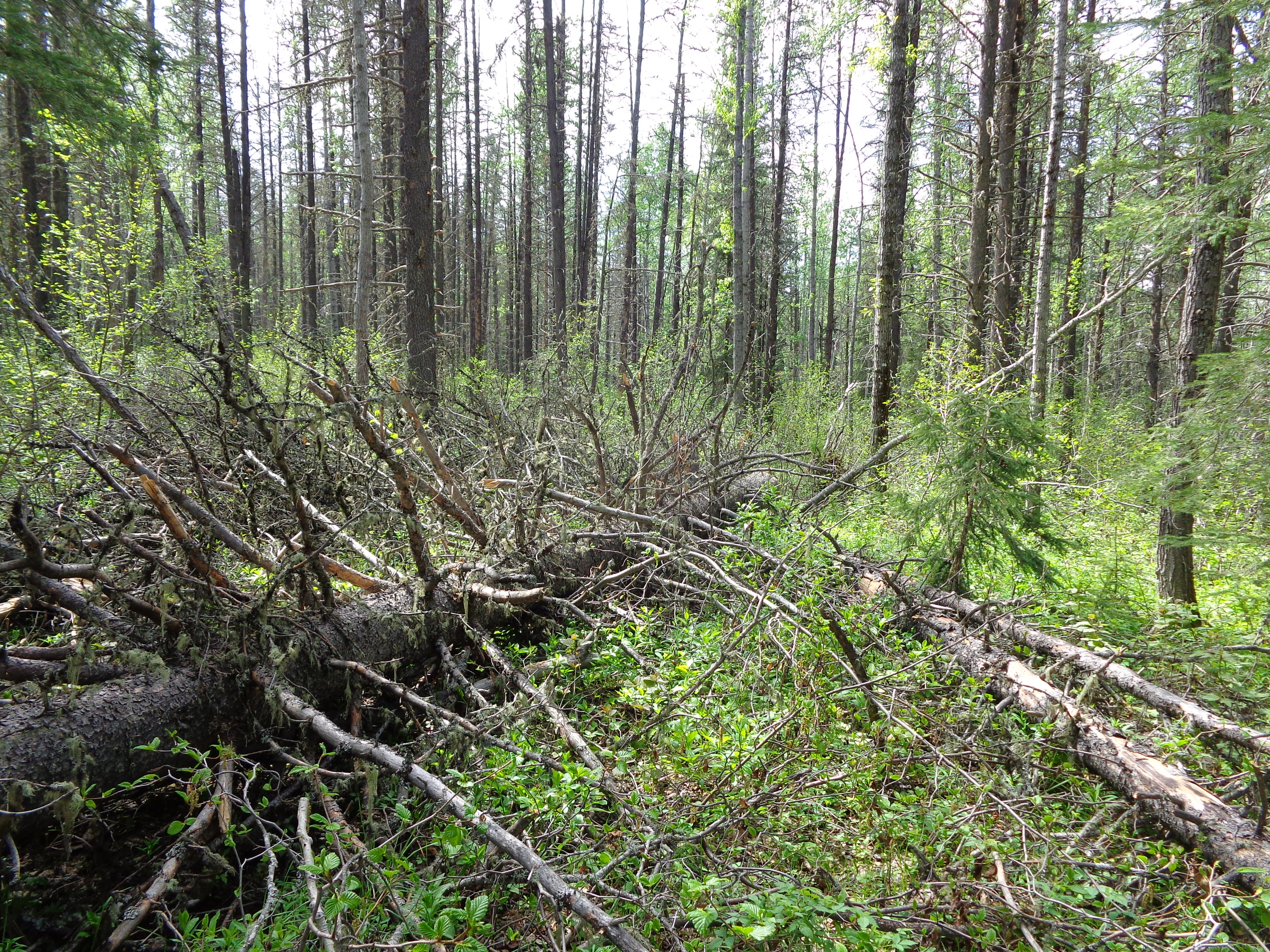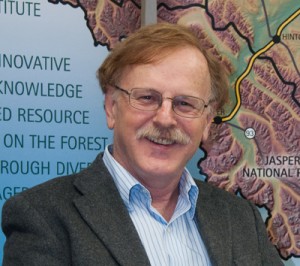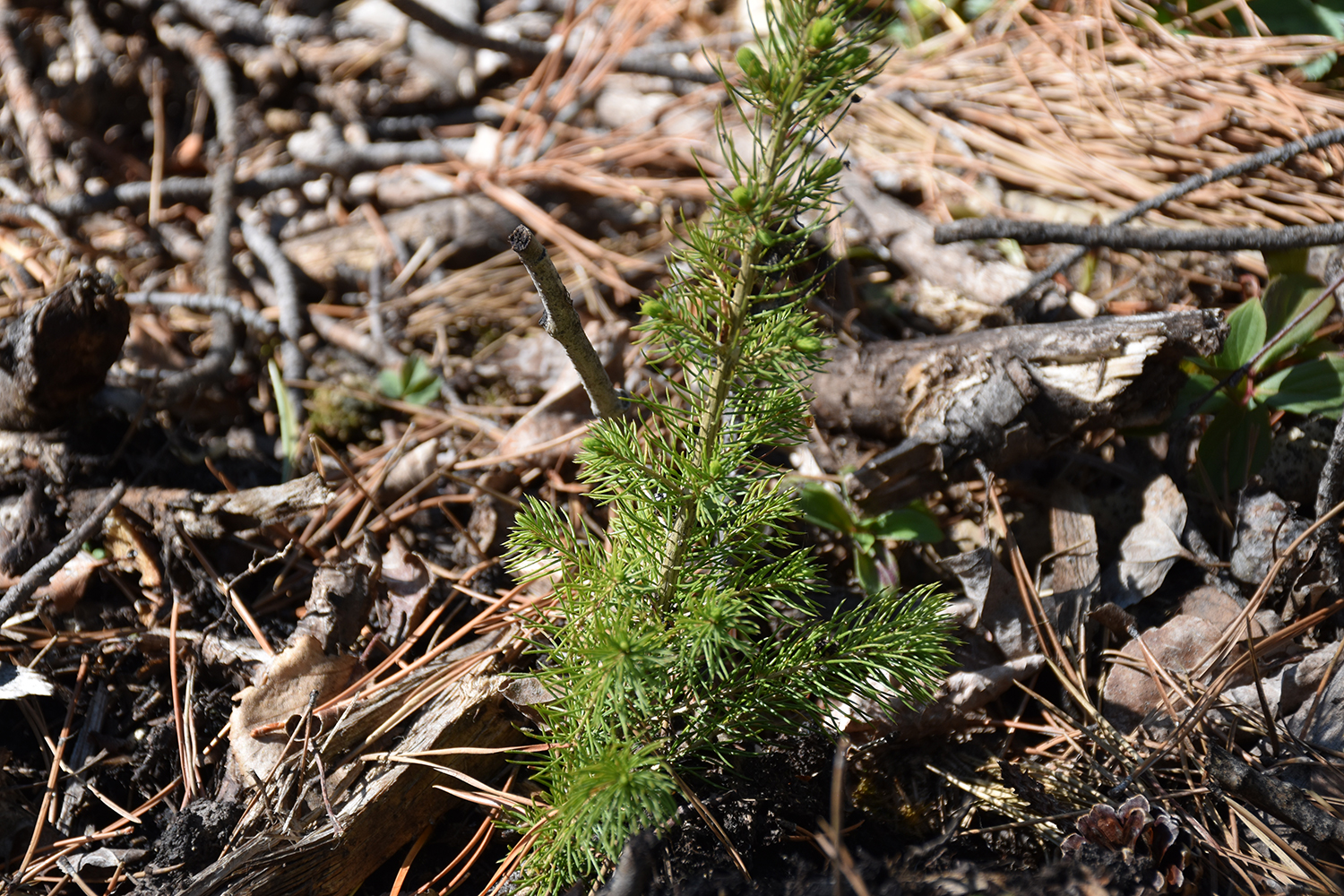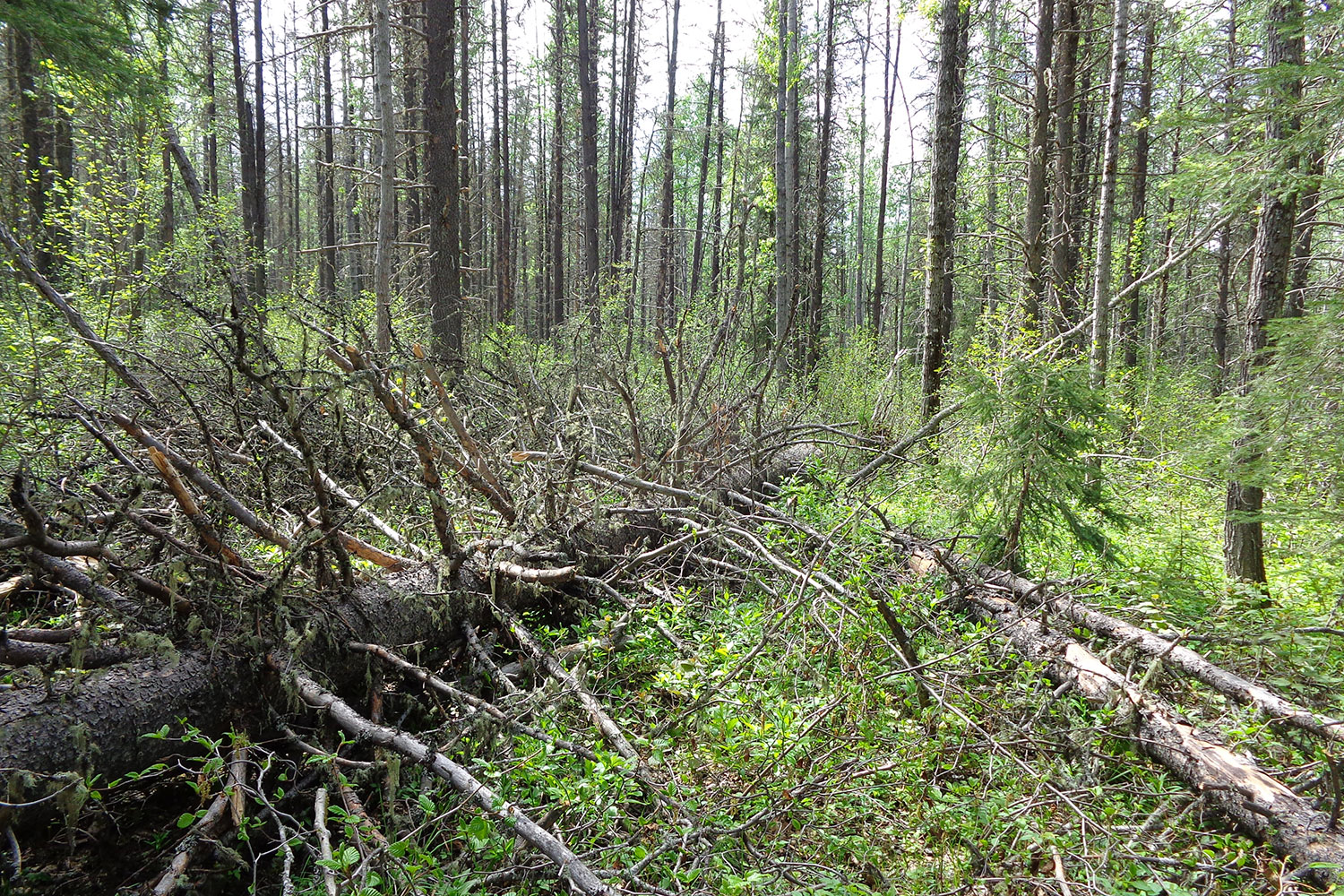
Beyond Beetle: Natural and facilitated lodgepole pine regeneration after mountain pine beetle outbreaks in Alberta
What will happen to stands after mountain pine beetle infestations?
Alberta is facing a future in which large tracts of lodgepole pine forest have died as a result of attack by Mountain Pine Beetle (MPB). Not all stands attacked by MPB will be salvage harvested; thus we need to understand whether and which tree species will regenerate in untreated post-attack stands and how this varies with ecosite and level of MPB mortality.
Objectives
- Assess the potential for lodgepole pine regeneration post-MPB attack across a range of lodgepole pine ecosite types in west-Central Alberta for stands that have experienced varying levels of MPB-caused mortality.
- Assess health of residual live lodgepole pine and regenerating seedlings across a range of lodgepole pine ecosite types in west-Central Alberta for stands that have experienced varying levels of MPB-caused mortality.
- Develop operational-scale harvesting and site preparation treatments to rehabilitate pure lodgepole pine stands that have been partially killed by MPB.
- Assess the fire risk of forests receiving partial harvesting and mechanical site preparation treatments designed to facilitate tree regeneration.
Methods
Surveys of untreated post-MPB stands will be conducted in west-central Alberta to assess the extent of seedling regeneration and the factors contributing to this. Sowing experiments will be used to further clarify the conditions under which natural regeneration is possible in these stands. Health of regenerating seedlings and residual live trees will be assessed in order to understand the probability of their future survival. Experimental trials of partial harvesting and site preparation will be established and monitored for natural regeneration and the survival of residual live trees, natural regeneration and planted seedlings. Fire risk associated with these treatments will be assessed using fuels assessments and modeling.
Outcomes
This research will provide critical information on the potential for natural regeneration in lodgepole pine forests that have been attacked by MPB, in turn informing a science-based approach to their future management. It will assist us to develop innovative silvicultural approaches for these forests. Further, it will provide the foundational knowledge upon which to build a decision support system that can be used to prioritize stands for different management approaches – whether that be salvaging, alternative silviculture, or ‘leave for natural’.
The project kicks off with support from Alberta Innovates, FRIAA and ESRD.
Field reconnaissance surveys to locate stands carried out.
Completed experimental harvesting, with ongoing fire hazard and assessment work.
25 new plots established. All plots assessed
Dr. Ellen MacDonald presents preliminary results from the project.














